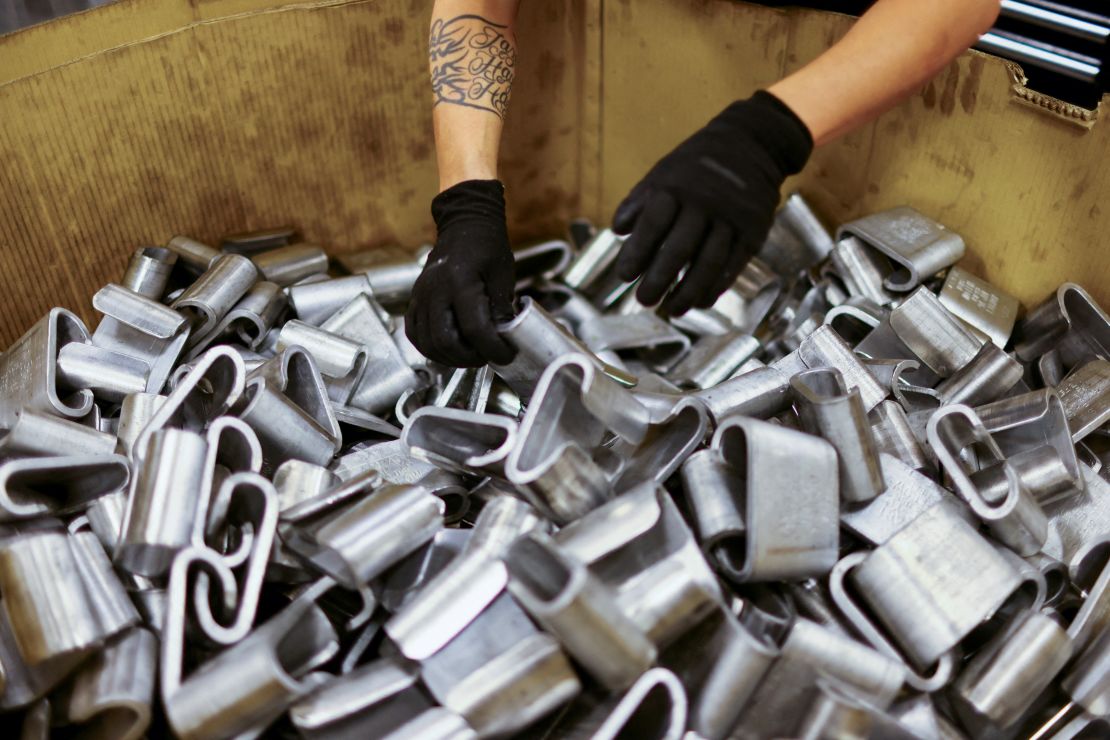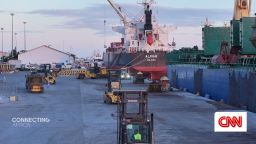Editor’s Note: Sign up for CNN’s Meanwhile in China newsletter, which explores what you need to know about the country’s rise and how it impacts the world.
As US supply chains decouple from China, Mexico’s manufacturing sector is emerging as a winner.
Manufacturing in Mexico is attractive for companies that experienced pandemic-era supply chain snarls or want to decrease reliance on trade between the US and China amid geopolitical uncertainty.
That’s called nearshoring, which is when companies bring production facilities closer to home markets.
As nearshoring continues and global supply chains are reorganized, Mexico’s manufacturing sector has an opportunity for long-term success, according to Alberto Ramos, head of Latin American economics research at Goldman Sachs, who spoke with CNN.
Ramos said Mexico and China have been competing for the US manufacturing market for years, but amid a shifting US-China relationship, Mexico looks poised to pull ahead.
Mexico surpassed China as the top exporter to the US in 2023. Those exports were driven by manufacturing, which comprises 40% of Mexico’s economy, according to Morgan Stanley.
US imports from Mexico continued to increase in February, according to April 4 trade data released by the Commerce Department. Meanwhile, Chinese exports to the US were down 20% in 2023, compared to 2022.
US Trade Representative Katherine Tai told CNN’s Julia Chatterley that supply chains have made the US economy over-reliant on the Chinese economy in the past.
“The challenge for us is how do you create more resilience in your economy and in trade? Because right now, the way trade has been operating, our supply chains have been so entangled and they have created so much concentration in the Chinese economy, that we all feel extremely vulnerable because the supply chains are fragile,” Tai said.
Amid shifting geopolitics and competition, US and Chinese companies both see potential in Mexican manufacturing: Low labor costs, geographic proximity to American markets and the US-Mexico-Canada (USMCA) agreement — a free trade accord established in 2020 that makes trade in North America more cost-effective and efficient — are all factors contributing to a potential boom.
Made in where?
While US policy intends to decrease reliance on China and “create more resilience” in US trade, moving supply chains can be tricky.
In fact, the US drive to disengage from the Chinese economy might be enabling China to access new markets and avoid US tariffs.
Cars are a major export for Mexico, and they illustrate much of what’s happening.
Mexico is a global hub for car factories, hosting plants from major companies operating in the US, including General Motors, Ford, Stellantis and nearly a dozen more.
Virtually every American auto manufacturer depends on parts from Mexico to build its cars or trucks, because those parts can be substantially cheaper than those made in the US.
Free trade agreements like the USMCA mean companies in the US, Mexico and Canada face fewer barriers moving, selling and buying parts across North America.
A diversion from free trade is tariff policy: In 2018, the US hiked tariffs on imports from China, which makes it more expensive for Chinese goods to enter US markets and dissuades companies from relying on Chinese supply chains.

Cars require tens of thousands of parts, which can be made in any number of places. And while Mexico’s manufacturing sector is increasing exports to the US, Chinese companies might be using Mexico as a route to avoid US tariffs on Chinese goods, according to Xeneta, an ocean freight rate benchmarking and market intelligence platform.
Shipping container exports from China to Mexico were up nearly 60% in January compared to a year ago, according to Container Trade Statistics analyzed by Xeneta.
The surge in exports from China to Mexico suggests the possibility “that the increase in trade we are witnessing is due to importers trying to circumvent US tariffs,” Peter Sand, chief analyst at Xeneta, wrote in a March 15 research note.
An April report by Moody’s Analytics said that while Mexico has increased its manufacturing output, production may be boosted by goods manufactured outside of the country.
The increase in Mexican exports to the US has “been roughly matched by simultaneous and closely correlated growth in Mexican imports from China,” according to S&P Global Market Intelligence country risk analysts Jose Enrique Sevilla-Macip and John Raines.
Goldman’s Ramos said there is an economic incentive to move production to Mexico to avoid tariffs. “It’s a way to circumvent the policy objectives that were behind the enactment of tariffs,” he told CNN.
On Capitol Hill, the possibility that Chinese steel is ducking US tariffs has garnered attention from lawmakers. The Biden administration announced that it is working with the Mexican government to prevent China and other countries from evading US tariffs on steel and aluminum via US imports from Mexico.
As early as February, Tai inquired about “the lack of transparency” around Mexico’s steel and aluminum imports from “third countries” during a meeting with Raquel Buenrostro, Mexico’s secretary of economy.
Concerns of tariff evasion are drawing a response from the US president — and will continue to beyond November’s election. The USMCA is set to be reviewed in 2026.
Both US President Joe Biden and his challenger, former President Donald Trump, espouse goals to grow domestic manufacturing, but they diverge on how to go about doing so.
Biden told steelworkers in Pittsburgh recently that the US government should consider tripling tariffs on Chinese steel. And Trump has proposed a potential 60% tariff on Chinese goods if he returns to the presidency.
“With both US presidential candidates vying to win important Midwestern swing states that have significant auto industries, the issue of US-Mexico-China trade will only increase as the 2024 presidential campaign unfolds,” S&P Global’s Sevilla-Macip and Raines said.
A gradual shift
While supply chains are shifting, moving factories isn’t always that simple. It can take significant investment, from time to money to people. The companies that are moving forward, though, are creating long-term opportunities for the Mexican manufacturing industry.
“It certainly feels like things are booming in Monterrey,” a city in northern Mexico, said Christoffer Enemaerke, a portfolio manager at RBC. On a recent trip there, he told CNN, “we met with companies and experts in the real estate industry and the feedback was that nearshoring is likely to be a multi-year driver of growth for Mexico, particularly in the northern part of the country.”
Tesla (TSLA), for example, said last year that it would build a new plant in Monterrey. “We’re super excited about it,” CEO Elon Musk said during an investor day for the company, adding that the plant would add capacity, rather than replace capacity elsewhere.

Sentiment on the ground is exciting, but most investment flows are yet to be seen, Ramos told CNN.
Analysts at Morgan Stanley see the value of Mexico’s exports to the United States growing from $455 billion to about $609 billion in the next five years.
That also makes Mexico an attractive base for many Chinese companies. EV maker BYD, a global competitor to Musk’s Tesla, announced in February plans for a major expansion in Mexico.
While BYD doesn’t currently sell cars in the US market, a move to Mexico would provide better access to the Mexican market while preparing the company for a potential move into the US.
“Chinese investment and exports to Mexico are highly likely to become a headline issue ahead of the 2026 scheduled review of the USMCA,” Sevilla-Macip and Raines said.
Until then, though, places like Monterrey continue to reap the rewards.
Monterrey, said RBC’s Enemaerke, “feels booming, new and vibrant, more so than other industrial cities I’ve been to, which have mainly been in Asia.”
CNN’s Michael Nam contributed to this report.







